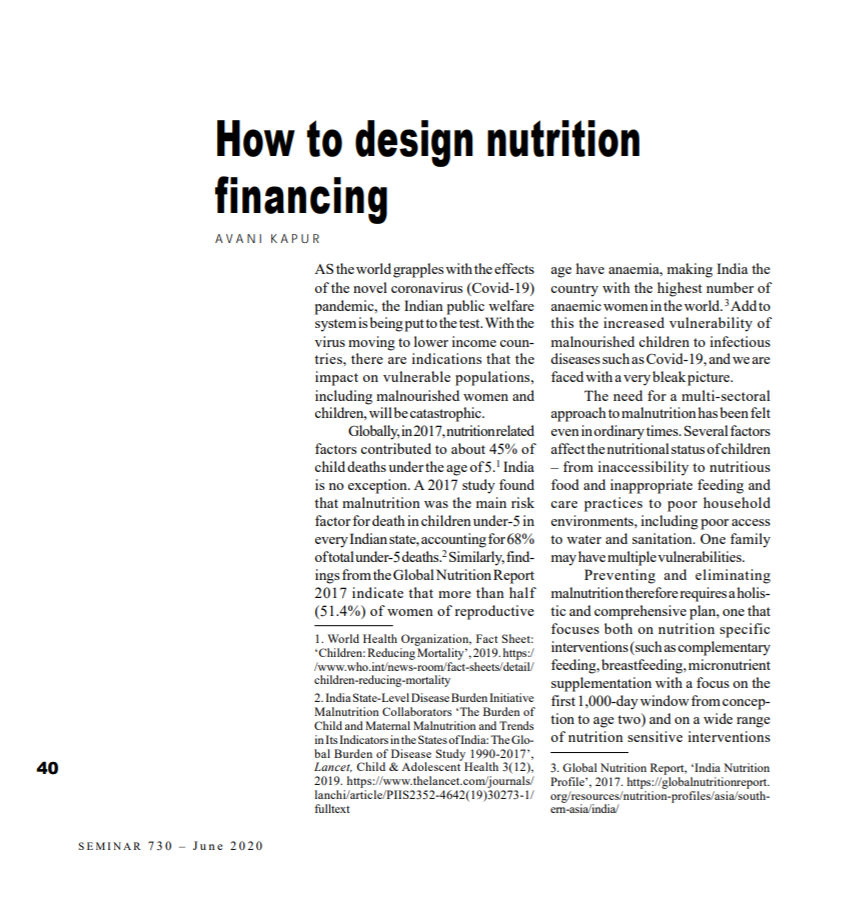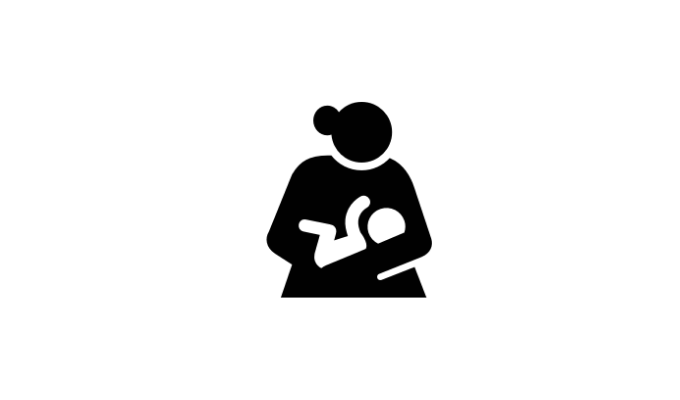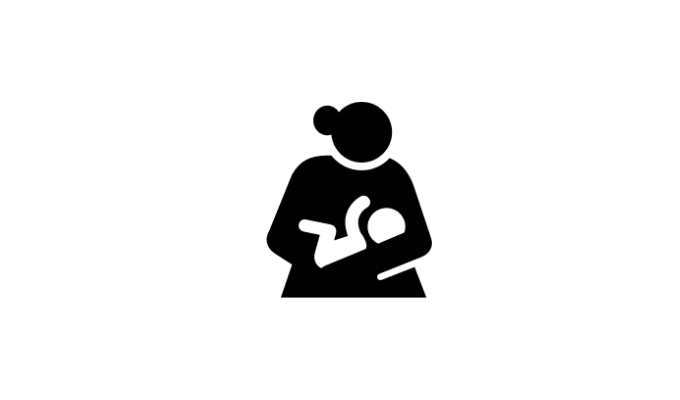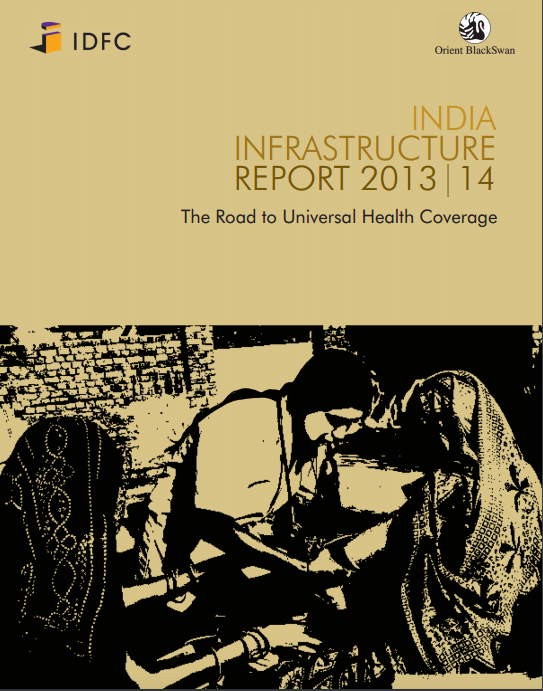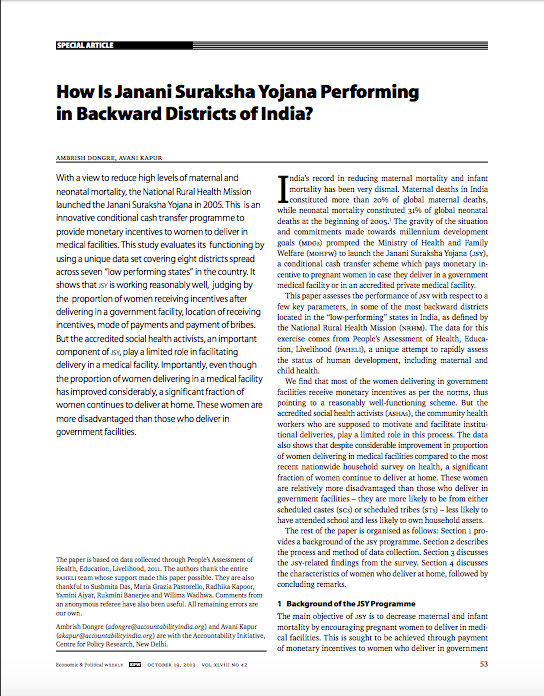In recent years, we have seen positive developments in policy, funding and outcomes on child nutrition in India. Now, when the Covid-19 pandemic has placed a significant strain on our already vulnerable populations, it is time is institute a far more decentralised, agile and equitable nutrition financing architecture.
Sector Scheme Level: National
Pradhan Mantri Matru Vandana Yojana & Janani Suraksha Yojana
This brief reports on two maternity benefits schemes, offering conditional cash transfers to pregnant women and mothers: a) The Pradhan Mantri Matru Vandana Yojana (PMMVY), Government of India’s (GoI’s) scheme aimed at providing partial compensation for wage loss and improving health seeking behaviour of pregnant women and lactating mothers, and b) the Janani Suraksha Yojana (JSY) aimed at incentivising institutional and safe delivery for reducing infant and maternal mortality.
Using government data, this brief reports on:
■ Trends in allocations, releases, and utilisation,
■ Coverage and payments, and
■ Outputs and outcomes.
Pradhan Mantri Matru Vandana Yojana & Janani Suraksha Yojana (PMMVY & JSY) (Post-Interim Budget)
This brief reports on two maternity benefits schemes, offering conditional cash transfers to pregnant women and mothers: a) The Pradhan Mantri Matru Vandana Yojana (PMMVY), Government of India’s (GoI’s) scheme aimed at providing partial compensation for wage loss and improving health seeking behaviour of pregnant women and lactating mothers, and b) the Janani Suraksha Yojana (JSY) aimed at incentivising institutional and safe delivery for reducing infant and maternal mortality. Using government data, this brief reports on: ■ Trends in allocations, releases, and utilisation ■ Coverage and payments, and ■ Outputs and outcomes
Pradhan Mantri Matru Vandana Yojana & Janani Suraksha Yojana (PMMVY & JSY) GoI, 2019-20 (Pre-Budget)
This brief reports on two maternity benefits schemes, offering conditional cash transfers to pregnant women and mothers: a) The Pradhan Mantri Matru Vandana Yojana (PMMVY), Government of India’s (GoI’s) scheme aimed at providing partial compensation for wage loss and improving heath seeking behaviour of pregnant women and lactating mothers, and b) the Janani Suraksha Yojana (JSY) aimed at incentivising institutional and safe delivery for reducing infant and maternal mortality.
Using government data, this brief reports on:
■ Trends in allocations, releases, and utilisation
■ Coverage and payments, and
■ Outputs and outcomes
JSY, Institutional Deliveries and Maternal Mortality
Janani Suraksha Yojana, Institutional Deliveries and Maternal Mortality: What does the Evidence say?
Despite tremendous medical advances, the instances of maternal and neonatal mortality occur quite frequently, especially in developing countries. Each year, more than half-a-million women die from causes related to pregnancy and child-birth, 99 per cent of which take place in the developing countries (UNICEF 2009). Nearly 4 million newborns die within 28 days of birth, 98 per cent of which occur in the low and the middle income developing countries. Most of these maternal and neonatal deaths are a result of direct causes—80 per cent of maternal deaths are due to obstetric complications including post-partum haemorrhage, infections, eclampsia and prolonged or obstructed labour, while 86 per cent of the newborn deaths are the direct results of the three main causes—severe infections, asphyxia and pre-term births.
These large numbers of maternal and neonatal deaths can be avoided if skilled medical personnel are at hand, better care is provided during labour and delivery, and key drugs, equipment are available. Given that these resources are more easily available in a medical facility, delivering in a medical facility has been recognised as an important way to reduce maternal and neonatal deaths. Yet, the proportion of women who deliver in medical facilities remains abysmally low in many developing countries, including India.
How is JSY Performing in Backward Districts of India?
With a view to reduce high levels of maternal and neonatal mortality, the National Rural Health Mission launched the Janani Suraksha Yojana in 2005. This is an innovative conditional cash transfer programme to provide monetary incentives to women to deliver in medical facilities.
This study evaluates its functioning by using a unique data set covering eight districts spread across seven “low performing states” in the country. It shows that JSY is working reasonably well, judging by the proportion of women receiving incentives after delivering in a government facility, location of receiving incentives, mode of payments and payment of bribes. But the accredited social health activists, an important component of JSY, play a limited role in facilitating delivery in a medical facility. Importantly, even though the proportion of women delivering in a medical facility has improved considerably, a significant fraction of women continues to deliver at home. These women are more disadvantaged than those who deliver in government facilities.


